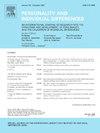Person, temporal, and contextual predictors of momentary purpose in everyday life
IF 3.5
2区 心理学
Q1 PSYCHOLOGY, SOCIAL
引用次数: 0
Abstract
Recent theoretical and empirical advances in purpose in life indicate a state component to feeling purposeful. This study used a micro-longitudinal study to identify person (age, sex, race, education), temporal (day in study, time of day, weekend), and broad (at work, with others) and specific (e.g., eating/drinking, shopping) contextual factors associated with momentary feelings of purpose. Participants (N = 303; age range 40–70) reported their momentary purpose three times a day for eight days and what they were doing at the time of the alert for the survey. Relatively older participants (b = 0.36, SE = 0.13, p = .007) reported more momentary purpose compared to relatively younger participants. Participants reported more purpose in the afternoon (b = 2.18, SE = 0.62, p < .001) and less purpose on weekends (b = −1.37, SE = 0.62, p = .027). The broad contextual factors were associated with purpose: Participants reported being more purpose-driven at work (b = 9.30, SE = 0.71, p < .001) or with others (b = 2.15, SE = 0.57, p < .001) compared to not at work or alone, respectively. Specific contextual factors were associated with feeling more purpose-driven (e.g., caregiving b = 14.17, SE = 1.99, p < .001; exercising b = 15.59, SE = 1.65, p < .001), except leisure activities, which were associated with less purpose (b = −4.76, SE = 0.99, p < .001). Feeling purposeful varies across moments and is sensitive to time of day, location, and activities engaged in.
求助全文
约1分钟内获得全文
求助全文
来源期刊

Personality and Individual Differences
PSYCHOLOGY, SOCIAL-
CiteScore
8.50
自引率
4.70%
发文量
577
审稿时长
41 days
期刊介绍:
Personality and Individual Differences is devoted to the publication of articles (experimental, theoretical, review) which aim to integrate as far as possible the major factors of personality with empirical paradigms from experimental, physiological, animal, clinical, educational, criminological or industrial psychology or to seek an explanation for the causes and major determinants of individual differences in concepts derived from these disciplines. The editors are concerned with both genetic and environmental causes, and they are particularly interested in possible interaction effects.
 求助内容:
求助内容: 应助结果提醒方式:
应助结果提醒方式:


